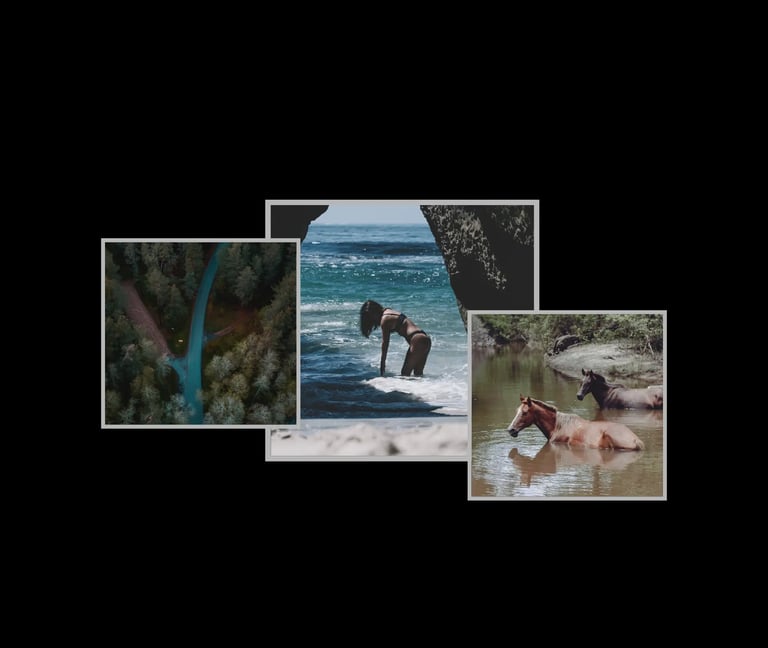The Voice Within: How Rachel Is Helping a Disconnected Generation Speak with Truth and Presence
PEOPLE & STORIES


Name: Rachel Anne Randolph
Title/Profession: Founder/CEO
Based in: United States
Instagram: @rachelannerandolph
Known for: Rachel is known for helping people overcome internal blocks to authentic self-expression by combining deep personal development with practical communication coaching.
In a world saturated with advice on how to speak louder, present better, or win influence, communication coach and founder of The Spec Method offers a refreshingly different perspective: go inward first. Born from her own journey through anxiety, emotional disconnection, and a search for something more meaningful, her work doesn’t start with polishing the external—it begins by understanding the internal landscape that drives how we show up in conversation, connection, and leadership. In this interview, she shares the story behind her methodology, what’s missing in today’s communication culture, and how slowing down, tuning in, and reconnecting with ourselves might just be the most radical communication skill of all.
1. Can you share the story of how you found your way into communication coaching? What personal or professional experiences led you to create The Spec Method?
My path into communication coaching started from humble and experimental beginnings. I struggled with anxiety and depression throughout my life. Therapy didn’t help, medication made things worse, and my relationships suffered well into my early twenties. I longed for a supportive space to connect with others who were also on a personal development journey.
At 25, I started a meetup called ConnectED — a space to come together and talk openly about navigating social anxiety. We met weekly for over four years, completely free, and grew to nearly 800 members by the time I stepped away from it.
At 27, I discovered NLP (Neuro-Linguistic Programming), and it changed how I processed my inner world. Where my mindfulness practices like journaling and meditation fell short, NLP helped my analytical mind identify patterns, organize thoughts, and improve communication — not by suppressing my mind, but by engaging it.
I later came across the work of the HeartMath Institute and began learning about the human energetic biofield. As I integrated these tools into my life, I saw massive changes: improved mental health, stronger relationships, the courage to leave toxic work environments, start my own business, and show up more confidently at networking events.
As I learned to blend mental clarity, emotional regulation, and energetic awareness into my external communication, people started asking for one-on-one help. That’s how The Spec Method was born — a framework rooted in understanding the internal landscape that communication comes from, rather than just the external techniques.
2. What did you notice about the way people communicate—whether in work, relationships, or everyday life—that made you feel this kind of coaching was so needed?
What I noticed is that it didn’t matter the context — social anxiety and communication challenges were often symptoms of something deeper. I observed professionals across industries, of all ages, still struggling with self-expression despite the growing popularity of personal development and vulnerability.
Think of the rise of thought leaders like Brené Brown — vulnerability was being talked about everywhere. And yet, people were still shy, still glued to their phones, still interrupting, still holding back. Mental health stats and suicide rates were rising — even before the pandemic.
This led me to recognize what I call the "disconnection crisis." More content and conversations about connection weren’t bridging the gap between insight and implementation. What people lacked wasn’t knowledge — it was integration. And I discovered that the bridge between consuming wisdom and embodying it was communication.
3. In the age of fast-paced everything — social media, email, instant messaging — how do you see communication changing, and what’s being lost in the process?
Conceptually, we’re being told to slow down more than ever — but most people don’t know how. Slowing down your thoughts, reactions, desires, or consumption habits requires actual practice.
In my work, we reverse-engineer the reasons why someone is moving so fast. Usually, it’s because they’re thinking faster than they can speak — which has both a cause and an effect. We identify one focus area and dig deep, evaluating it through multiple lenses and integrating new approaches over time.
Technology will keep advancing — that’s inevitable. But what’s not going away is our fundamental need for human-to-human connection. To preserve that, we need to slow ourselves down enough to experience it meaningfully.
4. You’ve worked with clients from different backgrounds. Are there any universal patterns you see in how people block their own self-expression?
Absolutely — the core pattern I see is a lack of emotional regulation. It’s not that people don’t have something meaningful to say; it’s that they can’t steady themselves enough internally to say it with clarity and courage.
I teach my clients to self-source their strength — to draw wisdom from their past pain, struggle, heartbreak, and fears they’ve already overcome. But awareness isn’t enough. What often blocks them is the fight-or-flight response when they’re about to speak their truth.
So, we practice. We build tolerance for those moments and help them embody their voice rather than fear it.
5. If someone feels stuck in their head — consumed by doubt, fear, or perfectionism — where do you suggest they begin?
Start by saying hello to it. Literally. “Hello doubt. Hello fear. Hello perfectionism.” Make it a habit to greet these feelings consciously throughout the day.
This creates a friendly, non-threatening inner dialogue. Most people try to get rid of those feelings as quickly as possible, but that approach often backfires. Greeting them opens the door to self-exploration and begins the inward journey that everyone talks about — but few actually walk.
6. How does The Spec Method differentiate itself from other communication coaching approaches available today?
The Spec Method has never been just about communication. Most traditional approaches focus on the outcome — public speaking, executive presence, persuasion — offering surface-level tactics like vocal control or body language.
The Spec Method transforms the inner experience of communication. It’s deeply personalized and grounded in day-to-day integration and nuanced accountability.
We go beneath the surface to examine how someone relates to themselves in moments of pressure, connection, and leadership. Combining NLP, breathwork, HeartMath techniques, somatic tools, and mindfulness, clients learn to regulate their nervous systems, clarify their thoughts, and express themselves with grounded, unhurried authority.
The goal isn’t to mold people into polished communicators. The goal is to help them alchemize their life experiences into meaningful, authentic expression.
7. Many people today feel unfulfilled, disconnected, and anxious — even if their lives appear “fine” on the outside. Why do you think that is? What do you believe we’re missing as a culture?
We're missing the truth that we are whole beings — from every toe to every thought. Wholeness isn’t something a guru can hand you. It’s a personal journey inward, an adventure into our own shadows, fears, joys, and desires.
The problem isn’t just that people avoid looking inward — it’s that society discourages it. Wholeness makes people harder to control. When your confidence and stability come from within, you stop outsourcing your power.
That’s how we’ve bred a culture of disconnection: generations pretending everything is fine, even when it’s not. But something is shifting. People are starting to see through the noise and call things what they are.
We’re missing hope. We’re missing trust — in ourselves, in each other. But I truly believe we’re on our way back to that, even if it doesn’t always look like it.
8. As a coach, where do you draw inspiration from — books, people, ideas — that fuel your work and keep you grounded in your mission?
In my early coaching years, I listened to sports radio. I was inspired by how coaches guide athletes: at the end of the day, you have to kick the ball. That simplicity shaped my approach. I teach a skill, the client tries it in real life, and we grow from there.
Beyond that, I draw inspiration from martial arts — the discipline, repetition, and yin-yang philosophy. I turn to the Tao Te Ching, mythology, archetypes, and historical figures like Hypatia. I’m inspired by science, religion, storytelling (like The Alchemist), and even conversations with futurists.
But at the core of it all — I draw inspiration from people. The full spectrum of human potential, pain, resilience, and beauty. Everything in life — science, nature, mysticism, technology — ultimately comes down to people. And how we communicate.
9. What’s one truth about communication that most people get wrong — and one shift that could change everything for them?
One truth most people get wrong is thinking communication is about others. What people will think, how they should respond, what they wish others would say.
In my work, we flip that completely. Communication is an internal process first. The external results — better leadership, deeper relationships — are just byproducts.
When clients learn to speak to themselves with more compassion and clarity, they naturally become better communicators with others. We never start with external communication — but it always improves as a result.
10. And finally—what does a more connected, expressive, and authentic life look like to you?
Honestly, it looks like the life I’m living now. I wake up each day knowing what I’m here to do — even if I don’t always know how. I adjust my energy and focus based on what’s needed and what I have to give. There’s a natural rhythm.
I don’t force things. When tension arises, I greet it. I ask where it’s coming from, listen to my intuition, and often do nothing — just allow it to pass. Creativity flows through me without needing to be perfect.
In my relationships, I communicate openly and freely. I feel no resistance — not with strangers, not with authority figures, not with loved ones.
To me, an authentic life flows like a river: full of activity, stillness, obstacles, and grace. When something disrupts that flow, I don’t shut down — I stay with it, whether it takes seconds or years to move through.
Everyone has the capacity to access that kind of flow. But it starts by noticing how your choices — what you consume, how you speak, how you feel — either bring you closer to, or further from, that connection.








